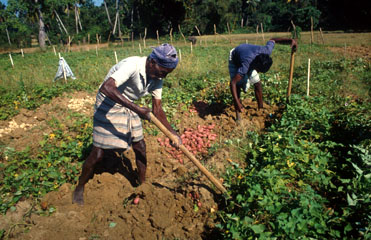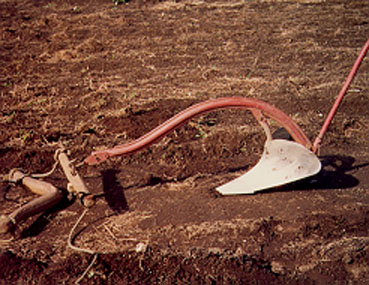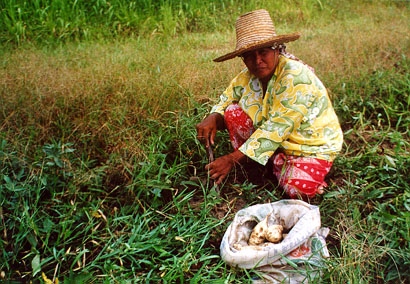|
There
are two ways sweetpotato storage roots are harvested: the one time or once-over
and the staggered or piecemeal harvesting . Once-over harvesting is common among
commercial growers while staggered harvesting is done by semi-commercial and
subsistence farmers. In one time harvesting, all storage roots from a crop are
harvested at the same time. Before digging, the vines are cut and rolled to one
side of the field. For small farms, the roots are dug using a knife, spading
fork, harvesting hoe or any implement. In large farms, the crop is harvested by
passing an animal- or tractor- drawn mouldboard plough along the rows.
In the staggered harvesting, the big roots may be selectively
harvested leaving the small ones to grow further in the lateral vines. A blunt
knife or a spading fork is used to dig the roots. In the first harvest digging
starts at the base of the plant towards the storage roots formed on the nodes of
the buried vine selecting only the big roots. Subsequent harvests are done by
tracing the vine and locating big roots. The roots to be harvested as well as
those left for the next harvest are kept free from surface wounds and bruises.
Subsistence and semi-subsistence farmers usually do this practice.
Staggered harvesting may also mean harvesting the crop
planted at one planting time in a field where sweetpotato is planted at
different planting intervals. This is done to provide a regular supply of
storage roots in the market over a longer period of time.
Reference
Rasco,
E.T., Jr. and Amante, V. 2000. Sweetpotato in Tropical Asia. SAPPRAD-PCARRD.
230 p.
Contributed
by:
Vilma Amante |

Harvesting
can be done by hoe (K.P.U. de Silva).

An
animal-drawn implement for harvesting from Leyte State Univ. (V.
Amante).

Piecemeal
harvesting (E.T. Rasco). |

